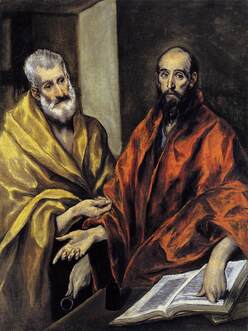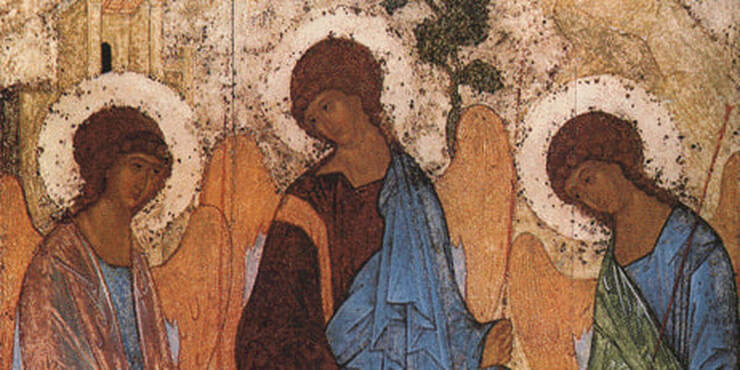 El Greco. Saint Peter and Saint Paul. 1587.
El Greco. Saint Peter and Saint Paul. 1587. At the Last Supper, Peter proudly boasted, ”Though all may have their faith in you shaken, mine will never be.” Even after Jesus warns Peter he would indeed weaken, Peter still insists, ”Even though I should have to die with you, I will not deny you.” Then the high priest’s courtyard and his triple denial of Jesus and a rooster crowing and bitter tears being shed…
When the Risen Jesus appeared to His disciples on the shore of the Sea of Galilee, He asked Peter three times,”Do you love me?” With an aching heart, in sadness and sincerity Peter protested, ”Lord, you know all things; you know that I love you.” Jesus then entrusted Peter with shepherding His flock but warned him of his death: ”When you grow old, you will stretch out your hands and someone else will dress you and lead you where you do not want to go.” He said this signifying by what kind of death he would glorify God.
The Lord’s only direction for Peter’s future was, ”Follow me.”
As the story goes, years later (67 A.D.) in Rome during the persecution of Nero, Peter decided to flee the city. On the Via Appia – the Appian Way, he met Jesus heading in the opposite direction. “Domine, quo vadis?” Lord, where are you going?” Peter asked. “To be crucified again”, Jesus said. Then Peter understood he was fleeing his destiny, returned to Rome, was arrested and crucified in Nero’s stadium on Vatican Hill – now famous for the great basilica that marks his grave.
From Peter (and his successor, the pope) we learn how to pursue the highest perfection. We can even learn something from their shortcomings. In Peter’s case we have a man who - while a natural leader - was headstrong, proud and overconfident; a man who, when the going got tough, became cowardly and denied even knowing Jesus. When later in life matters were again challenging, Peter knew he would not deny His Lord again; that experience in the courtyard taught him an important lesson. May we also learn from our “courtyard experiences”!
Like Peter, we too are called to follow Jesus - the highest perfection - despite our inadequacies. And so, “Quo vadis?” We can’t deny Jesus more than Peter did, nor follow Jesus more than he did. Peter’s story ended in glory; ours can as well.
David J. Conrad


 RSS Feed
RSS Feed
